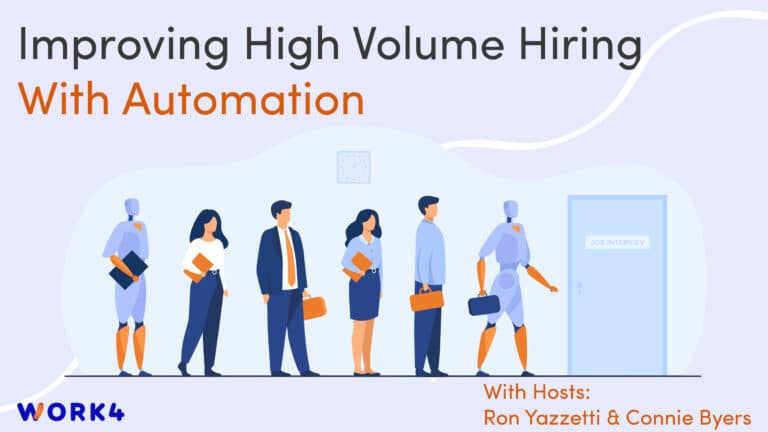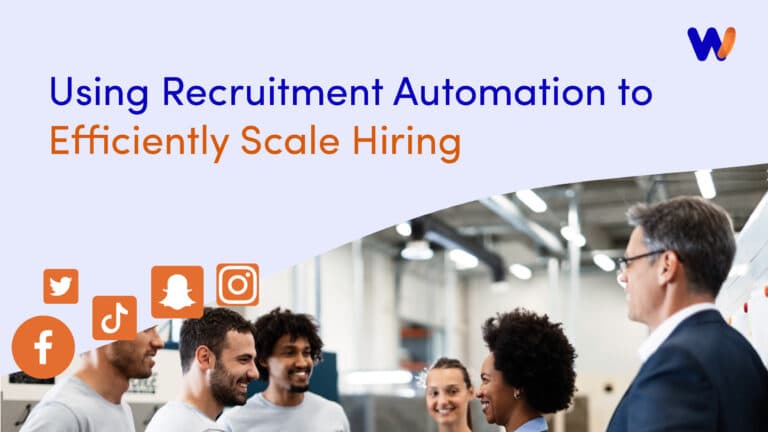At a time when employees are leaving jobs at an unprecedented rate, keeping good employees has become a priority for every industry. But in call centers, an industry that even before the pandemic was experiencing a 30% – 45% turnover rate, employee retention is a top factor. Every employee is unique in terms of what specifically satisfies them about a job and there is no one single answer to what makes employees leave. However, there is one universal truth, and that is that the voluntary departure of an employee is never a good thing. But in an industry where turnover seems like a necessary evil, can it be reduced? Yes. Where there are problems, there are solutions, and to help your organization gain long-term stability, we’ve put together our top tips for decreasing call center turnover to help you to build a more resilient contact center operation.
What is Employee Turnover?
Three HR terms tend to get grouped together, attrition, turnover, and churn, and oftentimes they are used interchangeably. Each word boils down to an employee leaving, but there are some key distinctions. Employee turnover is directly linked to job satisfaction and happens when an employee leaves and their position is subsequently refilled. For an employee’s departure to be considered attrition, the employee must depart voluntarily and the employer must not intend to replace them. Churn on the other hand is the combined number of a company’s turnover and attrition rates. You can read more about these terms in the article below for a clearer understanding.
The High Cost of Turnover
With a rate that is more than 3X the US all-industry average, it’s not just necessary but mandatory for call centers to reduce turnover. The cost of replacing an employee can range from one-half to two times the employee’s annual salary. These costs include the time and tools required for recruiting and hiring as well as the time and materials required to onboard a new employee. However, in addition to the monetary input required to recruit, hire, and onboard new employees, high turnover also has a variety of non-monetary costs.
Reduced Productivity
It can take upwards of six weeks to properly onboard and train a new hire. During that time it’s likely that your organization will feel a dip in productivity, an impact on quality of service, and in some cases a limit in business opportunities.
Skills/Knowledge Loss
Particularly if the employee has been with you for an extended period of time, you’ll be losing years of expertise and company knowledge along with the original investment it took to hire that employee.
Effects on Remaining Staff
High turnover can also have negative effects on company perception, culture, and employee morale, and may cause an increase in employee burnout as other members try to pick up the slack of missing teammates.
As you can see, when you lose a call center agent, you’re losing more than just a body, meaning that you can’t afford to lose valuable talent if you want your business to succeed, particularly, in today’s highly competitive labor market. But, in an industry where turnover is almost seen as a necessary evil, how can you decrease call center turnover in a way that’s sustainable and scalable? Let’s start by taking a closer look at what causes turnover.
What Causes Call Center Turnover?
Several things impact both voluntary and involuntary turnover numbers. It is, after all a multivariate problem and employees may leave for any reason or any combination of reasons. But, some of the top factors include:
- Poor candidate selection
- Misaligned expectations
- Poor onboarding or training
- Lack of recognition
- Scheduling issues
- Low employee engagement
- Limited advancement opportunities
- Poor team culture
- Low pay and/or poor benefits packages
No matter the reason for turnover, in the end, it boils down to a mismatch between your company and the candidate. Whether it be a hire whose skills aren’t a good fit for the job or a candidate who wasn’t prepared for angry customers on the phone, the turnover factors that you can control begin with your hiring process.
Retention Starts With a Strong Recruiting Strategy
When looking at your turnover rates, it might feel natural to look for difficulties with the job itself. While factors like the repetitive nature of the job and lack of recognition will always play a part in turnover if not addressed, the truth is that a bulk of call center attrition occurs between 30 and 90-days. Meaning that your average candidate isn’t sticking around long enough to notice those challenges. So, while employee satisfaction and engagement should always be a top priority, you need to start with finding the right hires to satisfy and engage. Furthermore, those hires need to be informed of the realities of the job before they’re hired.
Develop a Culture Worth Bragging About and Start Bragging
You may not be the biggest company around (or maybe you are,) but either way, there are several things your company can do to create a culture worth talking about. What makes you different from the competition? What perks and benefits do you offer that they don’t? All of the unique aspects of your company should be heavily intertwined in all recruitment marketing, social posting, and job advertising. They should also be used throughout the hiring process to ensure that you are attracting candidates that are a good match for your team culture and community. Building a company culture and employer brand that draws in top candidates isn’t something you can do overnight. But creating a work environment employees want to spend time in can be the biggest asset to attracting and retaining employees.
Define Your Ideal Candidate Persona
One of the biggest mistakes a call center can make when it comes to recruiting is not taking the time to define its candidate persona. In short, your candidate persona is a fictional representation of your ideal employee. Once you’ve established a well-defined company culture, it becomes easier to outline the ideal employee profile for your company. Knowing your candidate persona before your start recruiting makes it easier for you to tailor job descriptions in a way that will attract the desired types of candidates.
Manage Expectations Early and Often
Anytime you’re facing a candidate-driven market, there are a higher number of openings than candidates to fill them. This environment leads to reduced barriers for both entrance and exit, that being said, in the call center industry, the highest exit rates have always been between the first 30 to 90 days. Those numbers imply that what we’re looking at is a misalignment of expectations. So, how can you solve this? By going back to the beginning and re-evaluating your job descriptions. A high turnover rate among your newest staff members may indicate that the position doesn’t match the candidate’s initial expectations. Further, manage it by consistently setting expectations for every applicant in a transparent and engaging manner.
Utilize the Power of Automation
The quality of the candidates that enter your recruitment funnel will ultimately determine the quality of the talent you hire. Particularly in the call center industry, hiring the best talent often comes down to speed. Can you reach the best candidates faster than your competitors can? With automation, the answer is yes. Automations like those offered by Work4 can be used to streamline job posting, candidate nurturing, text recruiting, employer branding, interview scheduling, and more to help you secure top talent quickly and efficiently.
During the Hiring Process
A recruiting strategy designed for retention should include every aspect of the hiring process. Retention should be at the core of every action, from the first interview through to employment.
Interview and Educate
During initial interviews, recruiters need to make sure they are educating candidates about any aspects of the job that may be perceived as difficult. When a misalignment of expectations is a top turnover factor it is your recruiting team’s responsibility to show prospects exactly what the workload looks like, and just how much tenacity it takes to handle an angry customer with grace. This is also the time to share your unique employee value proposition and share with prospective hires what factors separate your organization from the competition.
During Onboarding
Coming in, new hires often have less investment in your company, and as we’ve mentioned most call center employees jump ship in under 90 days. To reduce this number and retain valuable staff, create an onboarding strategy that encourages new hires to make connections as quickly as possible.
Give Them a Mentor
Start new hires out strong and set them up for success by partnering them with one of your top agents for their first week on the job. Allowing them to listen in and see how your top performers handle calls will help them to learn best practices directly from your best agents and help them to feel more confident in their ability to handle the job. As an added bonus, it will help them adjust to your office environment faster by giving them a partner to lean on if they are struggling.
Take Training to the Next Level
If your goal is to seamlessly integrate new employees into your stores, they need to be equipped with the tools and knowledge to succeed in the role. Training and onboarding go hand in hand. If you don’t already have a regular training schedule for new hires, it’s time to get on board and create one. Not only will your customers reap the benefits of consistent quality service, but it can also help to reduce call center turnover. When agents are properly trained, it means that they have the right tools and knowledge to succeed in their role. Employees who feel they’ve been equipped with proper training are more competent and feel less frustration in completing expected tasks. This also empowers them when handling the type of difficult situations that may otherwise cause someone to decide they aren’t capable of the job. Keep your staff engaged by offering not only new hire training but ongoing learning in the form of team building, on-the-job training, company events, role-playing, and multimedia content.
During Employment
Now that you have your employees onboarded, it is important to put effort into retaining them as valuable members of your team. We listed some of the reasons for call center turnover at the beginning of the article, and addressed some of them already, but now it’s time to take a look at factors like burnout, lack of recognition, low employee engagement, and limited advancement opportunities. The first key to retention is addressing these issues within your team.
Monitor Workloads
Many call centers these days are operating with a less than optimal number of staff members, which means employees are working longer shifts and handling more calls per shift than ever before. This can quickly lead to burnout and fatigue. Monitor your team agents’ workloads and call volume and take a proactive approach. If it looks like an agent is facing burnout, help them feel supported by working with them towards a solution. Don’t wait until the exit interview to discover that workload stress overran a good employee’s job satisfaction.
Invest in Employee Wellbeing
Simple benefits like schedule flexibility or wellness programs can go a long way to increase employee well-being, work/life balance, and overall job satisfaction. During a recent survey, we found that perks outside of the scope of work are often well-received. For instance, we had a trucking company that offered mountain ski passes as a perk and it made it to the list of top satisfaction factors for their fleet. Your staff sits immobile for a large portion of their sifts, perks that get them moving can greatly increase the health and wellness of your team.
Offer Clear Career Paths
Lack of development and advancement opportunities is one of the top-cited reasons that employees leave call centers. During recent research into hourly candidates, nearly 40% of survey respondents cited advancement, training, and development as top satisfaction factors.
Give your valuable team a defined development plan with clear and defined growth indicators. When you help your team members to learn and grow within your organization, they won’t feel the need to move on to advance their careers.
Utilize Both Stay and Exit Interviews to Your Advantage
Two sides of the same puzzle piece, stay and exit interviews can give you valuable insight into what steps could be taken to encourage an employee to stay. Keep your interview light, informal and conversational. Take the time with each team member to learn what each employee is happy with as well as what could be improved to make them happier. But, don’t just listen, act. Particularly if you see a theme developing and find that many employees have the same concerns. When you act on employee feedback it empowers your team and lets them know they are valued.
On the flip side, use the exit interview to discover what factors lead to your employee’s departure. Employees who are no longer committed to your call center may be more likely to candidly share their thoughts about their experience in the workplace. Take advantage of this by asking them what they feel could have been done better on both sides. Use this feedback to improve the experience for the next round of hires.
Now, over to you
The first step in reducing call center turnover is recognizing that it is a problem you can tackle.
We don’t just believe these problems have solutions, we know they do. This is why we create hiring solutions to help you tackle them. If you’re ready to take your candidate sourcing and hiring to the next level and reduce your call center turnover rates forever, contact us today and let the experts at Work4 develop a custom solution for your call center today!












